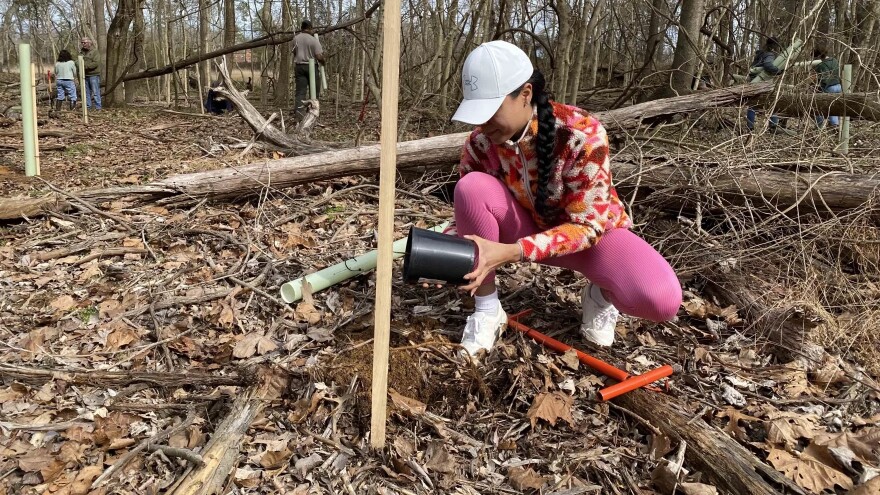Read the original story on the WHRO site.
Suffolk City Council voted this week to hand over 71 acres of historically significant land to the Nansemond Indian Nation.
The decision settles years of back-and-forth between the city and tribe over the future of Mattanock Town, which is already home to the tribe’s headquarters and annual powwow celebration.
Assistant Chief Dave Hennaman said owning the land will open up new opportunities to use it, as well as connect to the tribe’s history.
“That land would have once been occupied by our ancestors,” Hennaman said. It feels good “returning to that after all of these years and to have that land back in our possession.”
Getting to this point has “taken a long, long time,” he said.
The Lone Star Cement Corporation built 11 mine spoil pits on the piece of land along the Nansemond River. But the U.S. Environmental Protection Agency shut down the mining operation in the 1970s, and the land went into city hands.
The Nansemond tribe first started talking about gaining possession of the property back in the 1980s, Hennaman said.
The idea gained traction a few decades later, and in 2013, the city deeded the 71 acres to the tribe.
At the time, the agreement came with a requirement that the tribe build a re-enactment village on the site to serve as a tourist attraction. If they didn’t build it within five years, the city could repossess the property.
The tribe spent several years planning and fundraising to uphold that commitment. But Hennaman said during that time, the tribe’s situation and priorities changed.
In 2018, they gained federal recognition and joined an EPA tribal environmental program. Leaders began to focus on environmental work in order to be “proper stewards of the land,” Hennaman said.
“In retrospect, [the tourist village] wouldn’t serve the property’s best interest,” he said. “So, what we're hoping to do now is environmentally and culturally based.”
As part of its new memorandum of understanding with the city, the tribal nation agreed to provide some public access to the site, including walking trails and a kayak launch.
They also plan to finalize a conservation easement that ensures the area won’t be developed in the future.
The tribe is already working to restore the site, including a recent effort planting more than 400 trees on an 18-acre patch previously overgrown by invasive plants.

That’s part of a long-term restoration plan developed with the Chesapeake Bay Foundation and William & Mary’s Virginia Institute of Marine Science, which also includes installing oyster reefs and protecting eroding shoreline.
A few years ago, the Nansemond nation also took over a separate 500-acre property from the conservation group Ducks Unlimited. That land is located across the river at Cross Swamp.
At Wednesday’s meeting, Suffolk Councilor Shelley Butler Barlow said she was glad to put the issue to rest.
“The Nansemond Indian Nation has waited a really long time, hundreds of years, to resolve this particular situation,” she said.
Hennaman said it was emotional to hear that acknowledged, and he’s thankful for the many partners that stuck by their side.
“There’s a lesson that I hope that all of us will walk away with,” he said. “Patience and persistence.”


